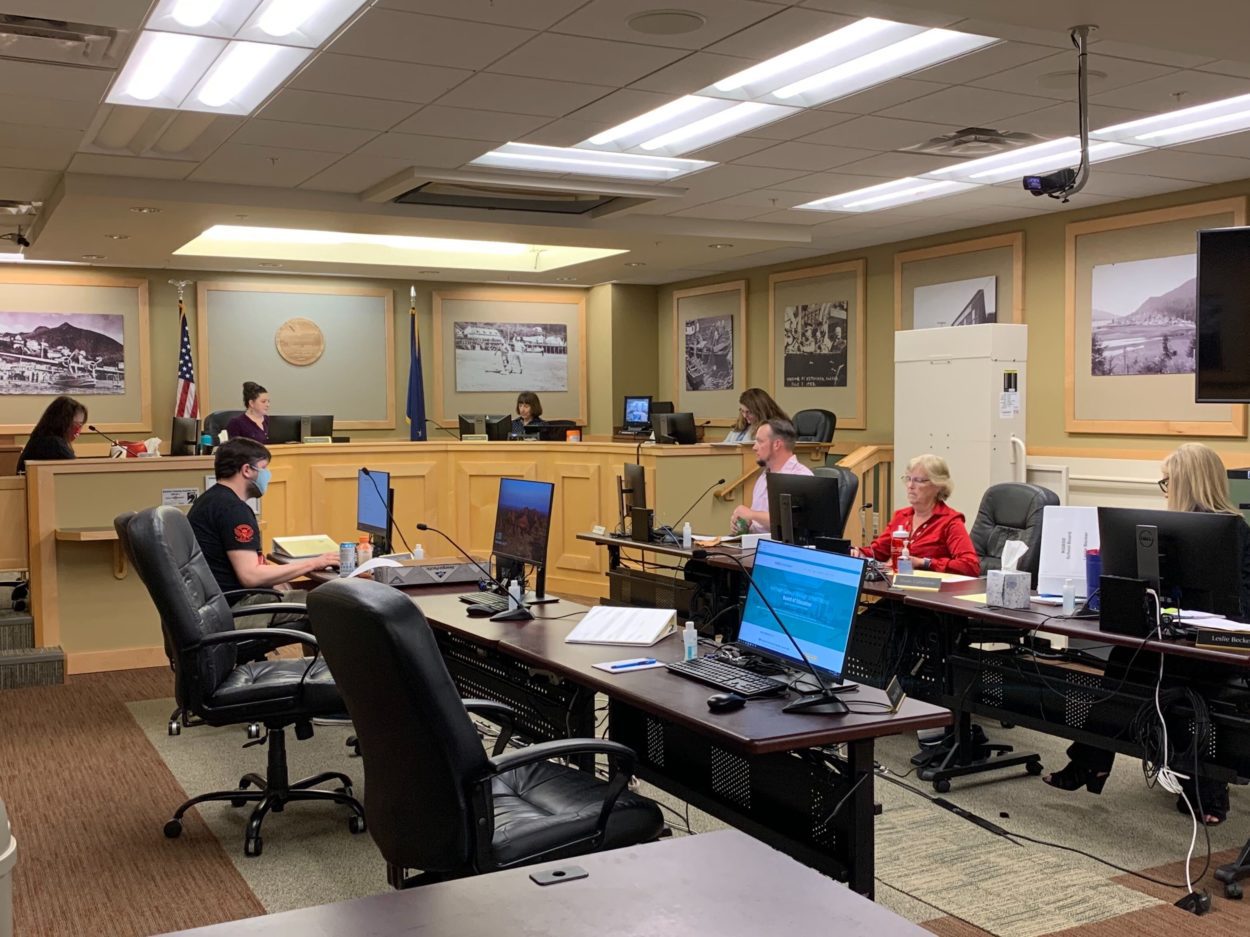
Ketchikan’s school board is pictured on Wednesday evening. The body rejected the district’s back-to-school plan and voted to fully reopen schools. (Eric Stone/KRBD)
Students in Ketchikan will go back to school five days a week this September.
That’s after Ketchikan’s school board rejected a back-to-school plan that would have kept schools half-full at the most.
The return to full-time, in-person schooling follows months of public pressure on the board to fully reopen school buildings.
“I’m shocked,” said parent Ali Ginter just after the board’s vote to reject Ketchikan’s “Smart Start” plan.
“I mean, I’ve gone to five meetings now. And we have not seen a huge change in the plan until tonight. And I know there’s parents that have consistently gone to all of these meetings, and I am impressed with our board for finally listening to us. And I appreciate them,” she said.
In Ketchikan’s most recent plan, schools would have operated at 50% capacity in order to maintain distance between students. District officials proposed spreading elementary-schoolers between traditional classrooms and so-called “annexes.” The idea was to lease non-school spaces like churches as — essentially — extra classroom space. And that would mean elementary-schoolers got four days of in-person instruction a week.
The board instead voted to use the proposed mitigation plan as a fallback if pandemic conditions worsen in Ketchikan.
But with the vote rejecting the plan, school board president Bridget Mattson said that extra space may no longer be an option.
“We won’t be able to set this plan up on the go. We won’t be able to all of a sudden set up annexes,” she said prior to the vote. “So we will go to a 50% scenario.”
A 50% scenario would mean a maximum of two days a week in school for kids at all grade levels. It’s not clear what would have to happen for the district to use its backup plan.
Those who voted to fully reopen schools, including board member Paul Robbins, Jr., cited low coronavirus activity in Ketchikan.
“I’ve been out at social outings where there has been almost no social distancing whatsoever on various occasions in various places, and we continue to not have these outbreaks,” Robbins said.
Other board members said they were worried that spreading kids between classrooms and annexes — and moving middle- and high-schoolers to remote learning two to three days a week — would mean a lower-quality education for Ketchikan’s students.
Robbins joined Mattson and board members Leslie Becker, Diane Gubatayao and Sonya Skan in the majority in the 5-2 vote. Board members Jordan Tabb and Tom Heutte voted against opening schools fully.
The head of Ketchikan’s teachers’ union, Gara Cesefske, meanwhile, says that even if the district maintains some coronavirus precautions — temperature checks, face masks and such — a return to full capacity means social distancing won’t be possible. And that means teachers are worried.
“The members are very concerned for their safety, returning to school, and social distancing was the primary thing that was making teachers feel safe returning into the classroom,” she said in a phone interview Tuesday night.
She says she’s surveying her members to determine how many are comfortable returning to full-capacity schools.
Districts in Anchorage and Fairbanks, both cities hit hard by the coronavirus, will start school entirely online.
Ketchikan’s first day of school is September 8.





